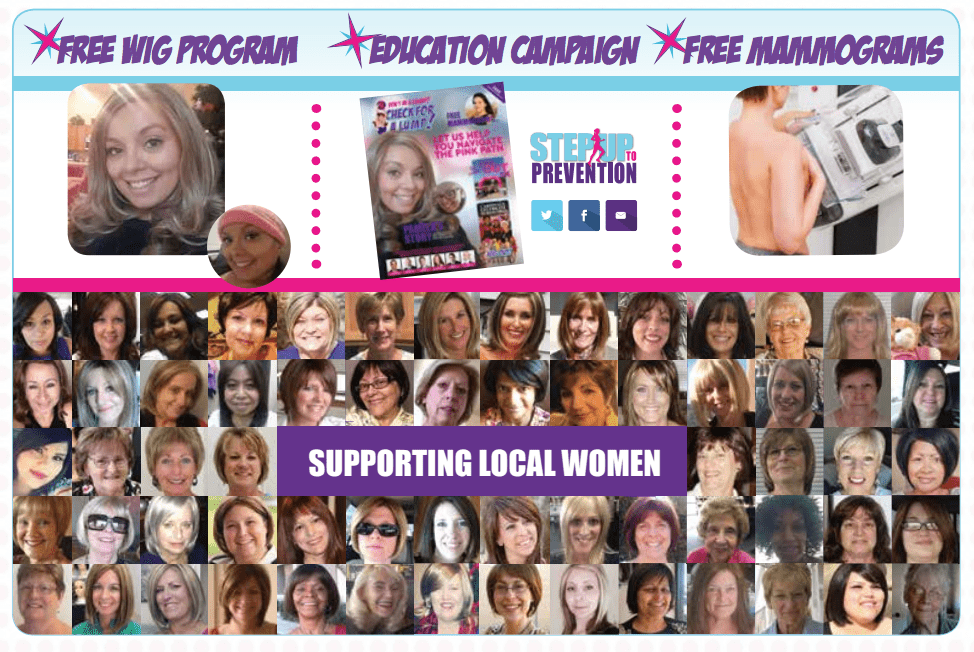You’d have to be living under a rock to not know that October is Breast Cancer Awareness Month, and at Spooner Physical Therapy, we’re very privileged to work with survivor Holly Rose and her foundation, Don’t Be a Chump, Check for a Lump!
It’s a name that’s intended to stick in your brain, and despite the somewhat playful rhyme, the foundation’s message and mission is a serious one. This year alone will see an estimated 270,000 women diagnosed with breast cancer, and of those, 41,760 are expected to be fatal.*
To wrap up this important month of raising awareness, we spoke with Holly to learn more about what women can do to protect their health, as well as to get her tips as a breast cancer survivor and advocate for women’s health.
Know Your Risks and Take Control
Holly points out that cancer rates have hit historical highs. “Cancer rates have soared over the years. In the 1950s, one in three people were struck by cancer. It is now one in two men and one in three women getting cancer,” Holly says.
Is there anything we can do about it? “A very large portion of all cancer incidents could be prevented by simple lifestyle choices,” Holly explains, noting that the American Cancer Society reports that at least 30 percent of all cancers are caused by a lack of proper nutrition, while the World Health Organization reports as high as 50 percent of cancers could be attributable to poor nutrition.
“The lifestyle choices we make have the potential to increase our cancer risk, including alcohol consumption, smoking, exercise, exposure to carcinogens in our beauty and household products and more. We have control over these choices. We strongly encourage you to step up to prevention and be accountable for your health,” Holly says.
The Centers for Disease Control recommends the following lifestyle choices:
- Maintain a healthy weight
- Eat a healthy diet with plenty of fruits and vegetables and other whole foods
- Get enough Vitamin D
- Exercise regularly, at least four times a week
In addition to those controllable factors, there are uncontrollable risk factors. Being a woman poses the biggest risk for breast cancer, and aging and genetics also contribute.
The Pink Path
Holly’s foundation started the “Pink Path” to help guide women through the breast cancer journey and provide immediate access to information and critical community support.
“It’s terrifying to hear the words, ‘You have breast cancer’,” she says. “The unknown is scary. Survivors need answers to their questions like, What steps are next? Which doctors are great? Where can I find support? What am I forgetting?”
The foundation has developed a breast cancer community full of all the key resources that survivors need. “Sharing our knowledge and resources helps to ease some of the burden for survivors and their caregivers as they try to find answers to these questions.”
Physical Therapy and The Pink Path
One of the steps along the path is physical therapy, which Holly calls an essential step to full recovery following breast cancer surgery and reconstruction.
“Physical therapy is often an overlooked step on the Pink Path, but going to physical therapy can improve how quickly one can rebound to a normal state of health,” Holly says. “Physical therapy can provide physical comfort and ease pain, reduce the effects of scar tissue, and give survivors their flexibility and strength back. It ultimately impacts and improves their mental state and daily life, and gives survivors the normalcy back that they deserve.”
Visit Don’t Be a Chump, Check for a Lump! to learn more about Holly and her foundation.
Learn more about Breast Cancer Rehabilitation at Spooner Physical Therapy. Ready to schedule an appointment? Schedule an appointment or complimentary movement screen with a Spooner physical therapist at one of our locations throughout the valley.
REFERENCES:
https://www.breastcancer.org/symptoms/understand_bc/statistics
https://www.checkforalump.org/breast-cancer-facts

